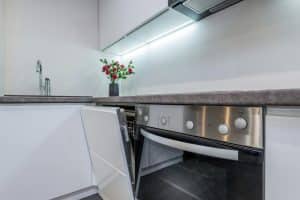Retrofit Renaissance: Transforming Offices into Carbon-Neutral Apartments
The world is facing a climate crisis, with rising sea levels, extreme weather events, and more frequent natural disasters. As individuals, we can make small changes to help reduce our carbon footprint, but it’s the responsibility of big industries and corporations to make significant changes. One industry that has a major impact on the environment is real estate, specifically the commercial sector. However, there is a new trend emerging that could revolutionize the way we think about office buildings and their impact on the environment – retrofitting them into carbon-neutral apartments. This is the era of Retrofit Renaissance, where old and energy-consuming office spaces are transformed into net-zero carbon residential buildings. Let’s take a closer look at this trend and its potential to transform our cities into more sustainable and livable spaces.
What is Retrofitting?
Before we dive into the idea of retrofitting offices into carbon-neutral apartments, let’s first understand what retrofitting means. Retrofitting refers to the process of making improvements or renovations to existing buildings to enhance their energy efficiency, improve their functionality, or update their design. This is done to achieve a specific goal, such as reducing energy consumption, increasing comfort levels, or making the building more environmentally friendly.
The Need for Retrofitting Offices
Office buildings account for a significant portion of energy consumption and greenhouse gas emissions worldwide. According to a report by the International Energy Agency, commercial and institutional buildings, including offices, are responsible for about 32% of global energy consumption and 19% of global greenhouse gas emissions. These figures are expected to increase in the coming years as more and more office spaces are being built to cater to the growing economy.
Retrofitting offices is crucial for two main reasons – to reduce their ecological footprint and to address the demand for affordable housing in cities. By transforming existing office buildings into carbon-neutral apartments, we can significantly reduce their energy consumption and carbon emissions, making them more sustainable for the planet. At the same time, it also creates more housing options in cities where space is limited and housing prices are skyrocketing.
The Benefits of Retrofitting Offices into Carbon-Neutral Apartments
Reduced Carbon Footprint
The most obvious benefit of retrofitting offices into carbon-neutral apartments is the reduction of carbon emissions. By using sustainable and energy-efficient materials and technologies, these buildings consume less energy, thus reducing their carbon footprint. This not only helps in the fight against climate change but also makes the building more cost-effective to operate for tenants.
Sustainable Energy Consumption
Retrofitting also involves incorporating renewable energy sources into the building’s design. This can include solar panels, water turbines, or geothermal energy systems. These sources can help provide clean and sustainable energy for the building, reducing the overall energy consumption from traditional sources.
Improved Indoor Air Quality
Old office buildings can have poor indoor air quality due to outdated ventilation systems and the use of toxic materials in their construction. Retrofitting involves replacing these systems with modern, energy-efficient ones that also improve the air quality inside the building. This can have a positive impact on the health and wellbeing of the building’s occupants.
Increased Property Value
Investing in retrofitting can significantly increase the value of a building. With the growing trend of sustainability and energy efficiency, carbon-neutral apartments are highly desirable for tenants and have a competitive advantage in the market. This not only benefits the environment but also adds value for building owners and investors.
The Challenges of Retrofitting Offices into Carbon-Neutral Apartments
High Initial Investment
Retrofitting an office building into a carbon-neutral residential space involves a significant initial investment. The cost of installing sustainable and energy-efficient systems and materials can be quite high, and the return on investment may take several years. This can be a deterrent for some building owners, especially in a market where financial incentives and policies for sustainable building are still lacking.
Technical Challenges
The process of retrofitting buildings can be complex and requires the expertise of professionals in various fields, such as architecture, engineering, and construction. Each building is unique in its design and may require a customized approach to achieve carbon neutrality. This can pose challenges in terms of technical feasibility and execution.
The Future of Retrofit Renaissance
Despite the challenges, the concept of retrofitting offices into carbon-neutral apartments is gaining momentum, and several successful projects have already been completed around the world. As awareness about the impact of climate change grows, so does the demand for sustainable and energy-efficient buildings. This has prompted many governments to introduce policies and financial incentives to encourage retrofitting and sustainable building practices. With the right support and investment, retrofitting offices into carbon-neutral apartments could be the new normal in the near future.
Conclusion
The Retrofit Renaissance is an innovative solution to two pressing issues – the need for more sustainable buildings and affordable housing in cities. With the right approach and support, this trend could pave the way for a more sustainable future, one building at a time. As individuals, we can also play our part by choosing to live and work in carbon-neutral spaces, pushing for government support, and spreading awareness about this game-changing trend. The time is now to embrace the Retrofit Renaissance and transform our cities into more livable and sustainable spaces.










